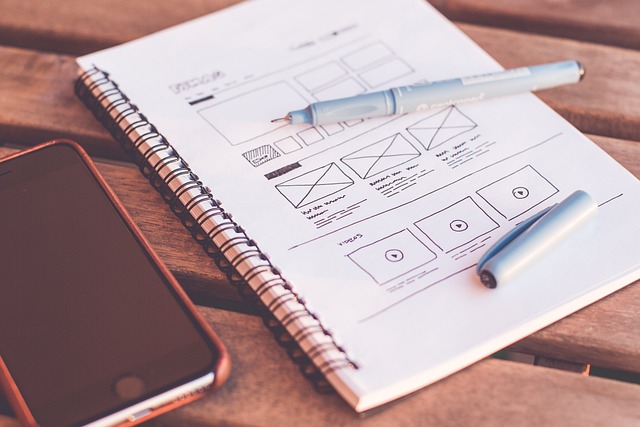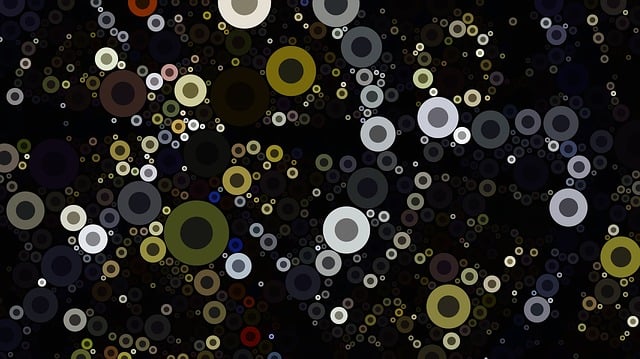High-quality creative web design combines aesthetics, usability, and powerful graphics to create engaging online experiences. Key principles include clean layouts, strategic color & typography, responsive design, and UX optimization. Effective creative web design enhances brand identity, drives conversions, and fosters user engagement through intuitive navigation, fast load speeds, and accessibility features. Advanced tools and techniques enable designers to craft immersive digital experiences that leave a lasting impression, solidifying the importance of high-quality creative web design in today's digital landscape. Accessible design principles ensure inclusivity for diverse users while measurable KPIs track success beyond visual appeal, driving business growth through enhanced user satisfaction.
High-quality web design and captivating graphics are essential elements that transform a mere online presence into a powerful digital experience. In today’s competitive digital landscape, creative web design is not just about aesthetics; it drives user engagement, boosts conversions, and solidifies brand identity. This comprehensive guide explores the key principles of effective web design, the art of enhancing user experiences through visuals, essential graphics elements, powerful tools, accessibility considerations, and metrics to measure success—all vital aspects of crafting exceptional creative web designs.
Understanding High-Quality Web Design: Key Principles

High-quality web design goes beyond aesthetics; it’s about crafting a user-friendly, visually appealing, and effective online presence. At its core, creative web design balances aesthetics with functionality, ensuring sites are not only beautiful but also intuitive and optimized for various devices and browsers. Key principles include a clean layout that enhances readability, strategic use of color and typography to create a brand identity, and responsive design that adapts seamlessly across platforms.
Effective creative web design also prioritizes user experience (UX), considering navigation, page load speeds, and accessibility features. It leverages white space thoughtfully, avoids clutter, and employs high-quality graphics and visuals to engage users while maintaining a cohesive and professional look. Ultimately, a well-designed website becomes a powerful tool for businesses to connect with their audience, convey their brand story, and drive conversions.
The Role of Creative Visuals in User Experience

In the realm of high-quality web design, creative visuals play a pivotal role in shaping user experiences. Beyond mere aesthetics, they serve as powerful tools to communicate brand identity, engage audiences, and guide users through digital interfaces. Well-designed graphics, coupled with intuitive layouts, can transform a mundane website into an inviting, interactive space that keeps visitors captivated and eager to explore further.
Creative web design isn’t just about looking good; it’s about effectively conveying information and facilitating navigation. Visually appealing elements, such as eye-catching illustrations, thoughtfully chosen color palettes, and strategic use of white space, help to establish a brand’s unique character while enhancing usability. By seamlessly integrating graphics into the overall design, developers can create a harmonious user experience that resonates with target audiences, ultimately driving engagement and conversion rates.
Essential Elements of Stunning Graphics for Websites

In the realm of creative web design, stunning graphics play a pivotal role in capturing and retaining user attention. Essential elements that contribute to high-quality website graphics include visually appealing visuals, harmonious color schemes, and well-designed layouts. These components not only enhance the aesthetic appeal but also serve as effective visual cues, guiding users through the site’s content.
High-resolution images, carefully chosen typography, and strategic use of whitespace are key aspects that contribute to a seamless and engaging user experience. By integrating these creative web design elements seamlessly, graphics can convey brand identity, highlight key information, and foster a sense of professionalism, ultimately making websites memorable and captivating.
Tools and Techniques for Web Designers to Achieve Excellence

Web designers today have an array of powerful tools and techniques at their disposal, enabling them to create truly exceptional and engaging creative web designs. From Adobe Creative Suite to innovative design platforms like Figma and Sketch, designers can harness cutting-edge software to bring their visions to life. These tools offer a wealth of features, from intricate vector graphics creation to responsive layout design, ensuring that websites are not only visually stunning but also optimized for various devices.
Additionally, web design trends emphasize the importance of interactive elements, animation, and micro-interactions, enhancing user experiences. Designers can leverage libraries like CSS3 and JavaScript frameworks to add dynamism to their creations, making them more captivating and intuitive. By combining these tools and techniques, designers can craft immersive online experiences that leave a lasting impression on users, solidifying the concept of high-quality web design in the digital landscape.
Accessibility and Inclusive Design Considerations

In the realm of high-quality web design and graphics, accessibility and inclusive design considerations are no longer optional; they’re essential components of creative web design. Building websites that cater to all users, regardless of their abilities or disabilities, not only ensures legal compliance but also broadens your audience reach. This involves implementing features like alt text for images, keyboard navigation support, high contrast color schemes, and clear content structure. By embracing these practices, designers can create digital experiences that are both visually appealing and functional for everyone.
Inclusive design thinking extends beyond technical implementations. It requires an understanding of diverse user needs, preferences, and limitations. This might include accommodating users with visual impairments who rely on screen readers, ensuring text is legible for those with low vision, or providing clear captions for multimedia content to benefit deaf and hard-of-hearing viewers. A truly creative web design approach considers these aspects, fostering an inclusive digital environment where all users can engage and interact seamlessly.
Measuring Success: Evaluating the Impact of High-Quality Web Design

Measuring success in web design is more than just achieving a visually appealing layout; it’s about gauging the impact and effectiveness of a creative web design. High-quality web design goes beyond aesthetics to deliver tangible results, such as increased user engagement, improved conversion rates, and higher search engine rankings. By utilizing advanced graphics, intuitive navigation, and optimized content presentation, websites become more user-friendly, encouraging visitors to explore and interact with the site.
Evaluating the success of a creative web design involves tracking key performance indicators (KPIs) like bounce rate, time spent on page, click-through rates, and conversion metrics. These data points offer valuable insights into how users perceive and engage with the website. A well-designed website that effectively captures the brand’s essence and meets user needs will result in positive interactions, leading to higher satisfaction, increased customer retention, and ultimately, business growth.
